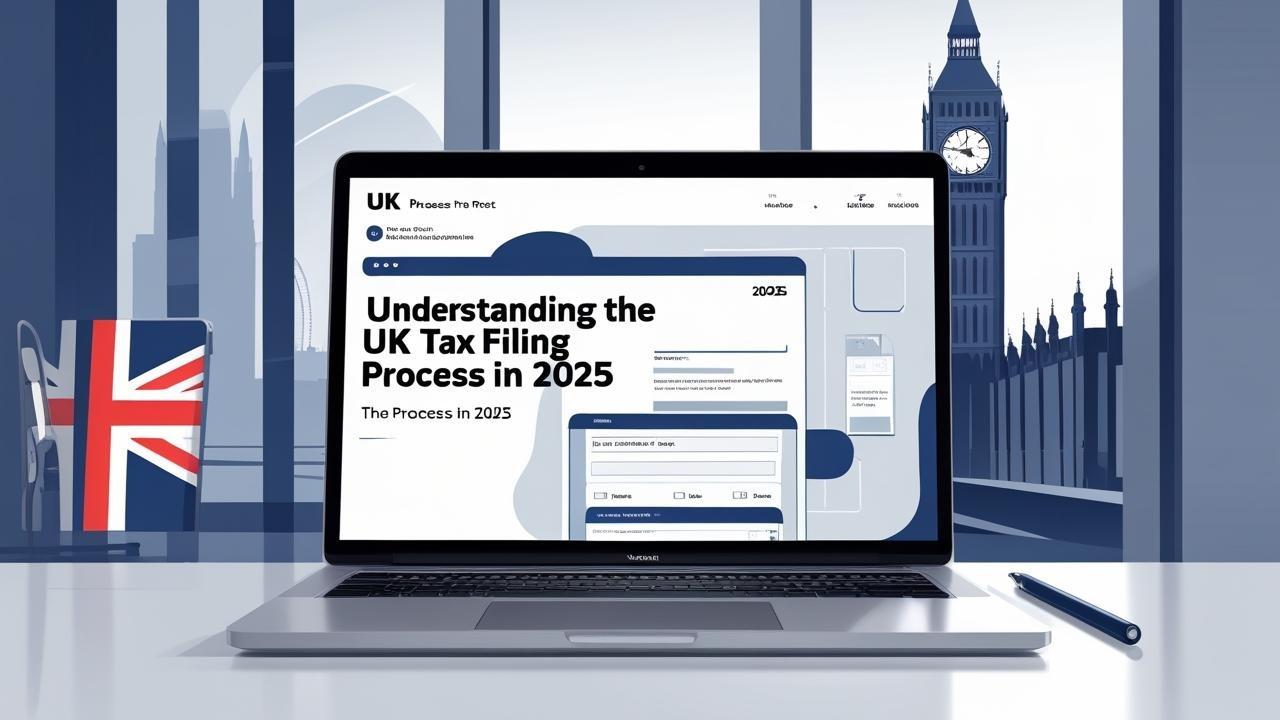
Understanding the UK Tax Filing Process in 2025: Changes, Rules & Tips
Tax season in the UK brings with it both obligation and opportunity. For millions of taxpayers,navigating the self-assessment system can be confusing, especially with updated rules,changing digital processes, and evolving HMRC requirements in 2025.
Whether you’re a seasoned sole trader or filing for the first time, staying up to date on the latest tax rules and filing practices is crucial to avoid penalties and take full advantage of allowable reliefs
This article breaks down the 2025 UK tax filing process, recent changes from HMRC, and insider tips to help you file smarter
What Is the UK Tax Filing Process?
The self-assessment system allows individuals to report their income, claim allowable expenses, and pay tax directly to HM Revenue and Customs (HMRC). You are responsible for submitting your tax return if you're:
- Self-employed or a sole trader
- A company director
- A landlord earning rental income
- Earning income (e.g., dividends, foreign income)
- A high-income earner (over £100,000)
Tax is filed for the previous tax year. For example, the 2024/2025 tax year runs from 6 April 2024 to 5 April 2025. The deadline for online filing is 31 January 2026.
Recent Changes to Be Aware of in 2025
Staying current with HMRC updates is key to filing accurately. Here are the most notable changes in 2025:
1. Digital Expansion Under Making Tax Digital (MTD)
- MTD for Income Tax is being rolled out to self-employed individuals and landlords earning over £50,000.
- You'll need to use HMRC-approved software to maintain digital records and submit quarterly updates.
2. Updated Expense Categories for Sole Traders
- HMRC has simplified some expense classifications for better reporting clarity.
- New breakdowns now allow clearer claims under 'home working' and 'software subscriptions'.
3. Revised Late Penalty System
- A new points-based penalty systemis now in effect for VATs
- One late return = 1 point. Reaching your point threshold (usually 4) triggers a £200 penalty.
4. Adjusted Income Tax Bands (for England, Wales, and Northern Ireland)
- Personal allowance remains at £12,570.
- Basic rate of 20% for income up to £50,270.
- Higher rate of 40% for income from £50,271 to £125,140.
- Additional rate of 45% applies beyond that.
5. Expanded Help-to-Save Scheme Eligibility
- Low-income self-employed individuals may now qualify.
- The government gives a 50p bonus for every £1 saved over four years.
UK Tax Filing Process: A Refresher
Step 1: Register with HMRC
- If you haven't filed before, register for self-assessment by 5 October 2025.
- You'll receive a Unique Taxpayer Reference (UTR) and login credentials for your Government Gateway account.
Step 2: Keep Digital Records
Under MTD, you must use software (like QuickBooks, Xero, or Selftax) to record your income and expenses in real time.
Step 3: Prepare Your Income & Expenses
Gather all sources of income:
- Employment or freelance work
- Rental income
- Dividends and savings interest
- Overseas income or investment income
And organise your deductible expenses:
- Business mileage
- Office supplies
- Software tools
- Marketing costs
Step 4: Log In and Complete Your Return
Use HMRC's portal or Selftax to enter your details section by section. Validate everything before submitting.
Step 5: Review & Submit Before Deadline
Deadline for online submission: 31 January 2026
Step 6: Pay Your Tax Bill
You can pay by:
- Online bank transfer
- Debit or Corporate credit card
- Direct debit
- Post (cheque)
Tips to File Smarter in 2025
1. File Early
- Submitting early avoids last-minute errors and long HMRC wait times.
- You also get more time to budget if you owe tax.
2. Use Approved Software
- If you're under MTD, using tools like Selftax ensures compliance and automation.
3. Double-Check Personal Information
- Incorrect NI numbers or bank details delay refunds and trigger errors.
4. Understand What You Can Claim
- Don't leave money on the table. Claim costs like mobile phone usage, web hosting, and insurance if business-related.
5. Keep Five Years of Records
- HMRC can request evidence long after the tax year. Keep everything safely stored.
6. Use the Payment on Account Feature
- If your tax bill is over £1,000, HMRC may require two advance payments for next year.
How Selftax Can Help
Selftax is built for modern UK taxpayers who want to file fast and stress-free:
- Guided walkthroughs to avoid confusion
- HMRC-compliant submissions
- Digital document uploads
- Deadline reminders
- Affordable pricing for individuals and businesses
Whether you're self-employed, a landlord, or managing multiple income streams, Selftax simplifies compliance.
Conclusion
The 2025 UK tax filing process includes a mix of digital upgrades, policy adjustments, and stricter penalties. But with the right tools and a proactive mindset, filing your tax return doesn't have to be a burden.
Stay informed, keep your records up-to-date, and consider using a simple online solution like Selftax Blog to handle everything with ease.